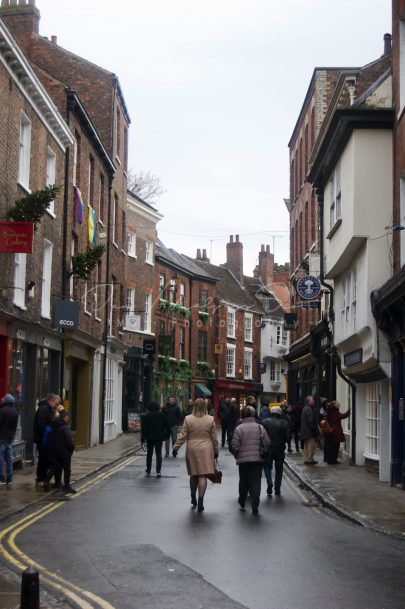![]()
Low Petergate, York, North Yorkshire.
Petergate is a street in the city centre of York, in England. It is divided into High Petergate and Low Petergate. The well-known view of the Minster from Low Petergate is described by the City of York Council as “excellent”.
Petergate generally follows the course of the via principalis of Roman Eboracum, which ran from the Porta Principalis Dextra, now Bootham Bar, to the Porta Principalis Sinistra, in what is now King’s Square. The main deviation from the Roman route is around its junction with Grape Lane, and this has been associated with destruction occurring when the Great Heathen Army entered York in 866. Based on archaeological records, the York Civic Trust argues that the street fell out of use immediately after the Roman period, but was re-established while the Roman walls still survived. This may have been as early as 627, when the first York Minster was built. In its early years, the minster had a large cemetery, which extended as far as Petergate, around its junction with Stonegate.
The current property boundaries largely date from the 10th century, and the street has always been a desirable area, with its junction with Stonegate a particularly high-status location. In the Mediaeval period, the street lay immediately outside the precinct of the minster. As the minster is dedicated to Saint Peter, this led to the name “Petergate”, which was first recorded in about 1190. In 1283, a wall was constructed around the precinct, with gateways opposite Duncombe Place and Stonegate. Buildings on the north-east side of the street were built up against the wall. Almost the whole street lay within the parish of St Michael-le-Belfrey, the church, on the street and next to the Minster, having been first recorded in 1294.
The street remained important over the following centuries, and in the 17th century, the Talbot Inn was established, one of the main inns in the city. In the 18th- and 19th-centuries, parts of the street were rebuilt, and buildings around the front of York Minster were demolished, to open up access to it. Despite this, numerous Mediaeval buildings survive, all in commercial use.


